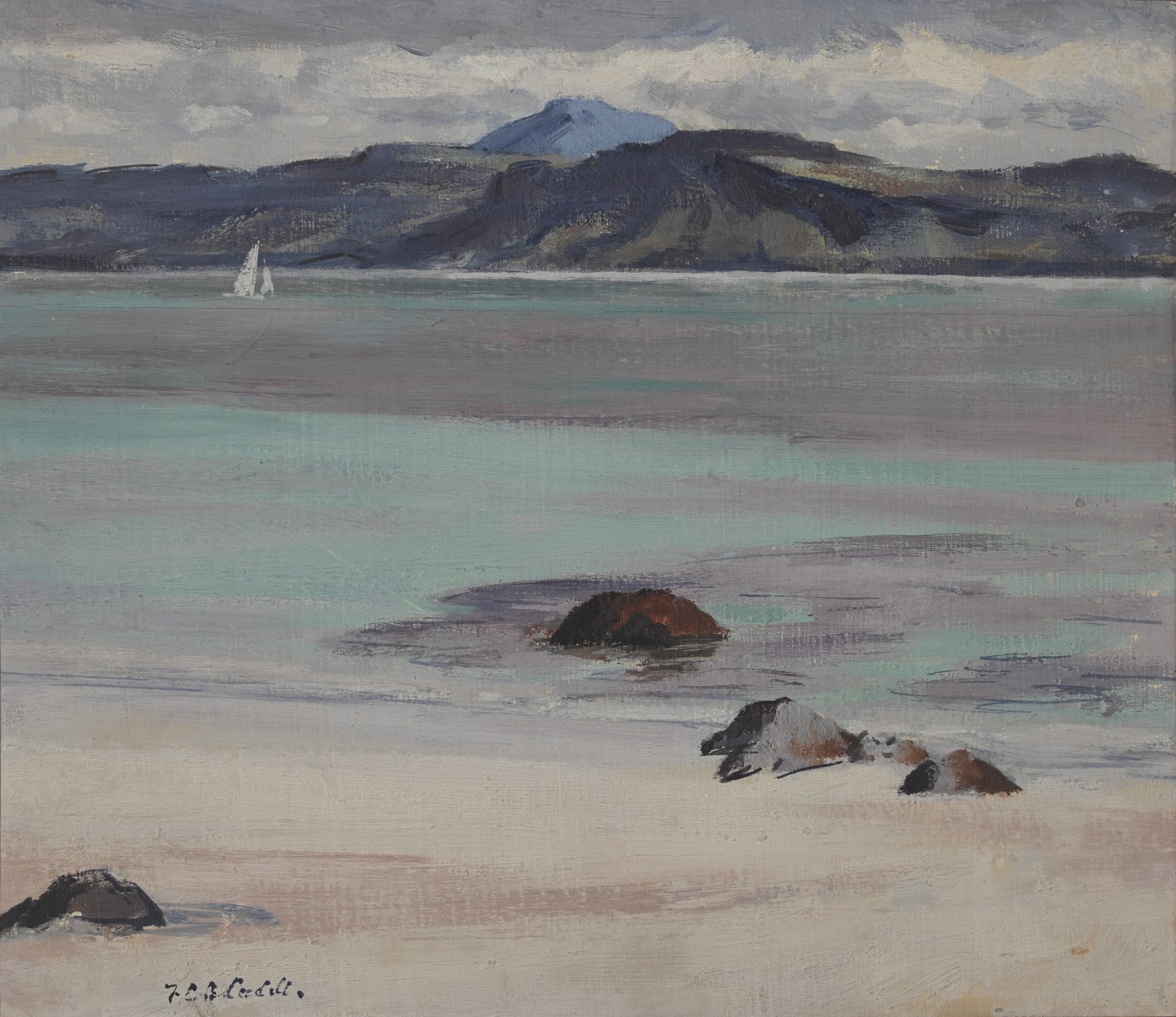DESCRIPTION
Cadell made his first visit to Cassis in 1923, returning the following summer with Peploe and his family. The two artists had become close friends and collaborators after the war. “They often criticised each other’s work,’ wrote critic and friend, Tom Honeyman “suggesting an improvement here and there, counselling eliminations of some passage or advising a fresh attempt.’ The Cassis paintings with muted colours and geometry of architecture and landscape betray their shared admiration for Cezanne. Peploe described Cadell’s paintings as ‘photographic in realism’ signalling the radical break with his pre-war style.
DETAILS
-
Artist
Francis Campbell Boileau Cadell
-
Date
1924
-
Medium
Oil on panel
-
Object number
147
-
Dimensions unframed
44.4 × 36.8 cm
-
Dimensions framed
52 × 59 cm
-
Place depicted
Cassis (3028431)
-
Marks
Signed bottom left
-
Subject
ARTIST PROFILE
Francis Campbell Boileau Cadell RSA RSW, 1883-1937
Born in Edinburgh, Francis Campbell Boileau Cadell was the child of a distinguished surgeon. Brought up in the Georgian New Town, he attended Edinburgh Academy but left at sixteen to study art in Paris at the Académie Julian. The next seven years were spent either living in Paris or visiting it regularly from Edinburgh. In 1906 he capped his studies with a year at the Art Academy in Munich.
His youthful work reveals a debt to the Impressionists, taken to extremes following a revelatory trip to Venice in 1910. Back in Edinburgh, Cadell embarked on a series of swagger portraits, still-lives and interiors staged in his elegant New Town Studio which are preoccupied with the possibilities of mirrored reflections and the tonal effects of black and white in the manner of Whistler and Manet.
At the outbreak of war, Cadell’s reputation was at a peak. The youngest by almost ten years, Cadell was the only Colourist to fight in WW1 serving continuously on the Western Front and was twice wounded. Returning to Edinburgh in 1919, he brought with him Charles Oliver, who became his life-long partner and sometime model.
With Peploe’s encouragement Cadell turned to painting interiors and still lifes in planes of vivid colour and geometric forms verging on the abstract. His brilliant handling of colour was used to great effect on his annual visits to Iona, capturing the intense light refracted off the sea.
Never business-like Cadell fell prey to the collapse of the art market following the 1929 crash. He died destitute in 1937, aged 54.











